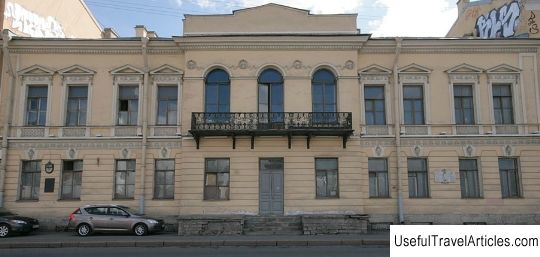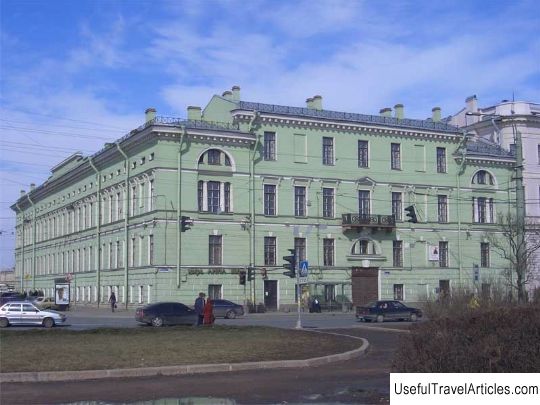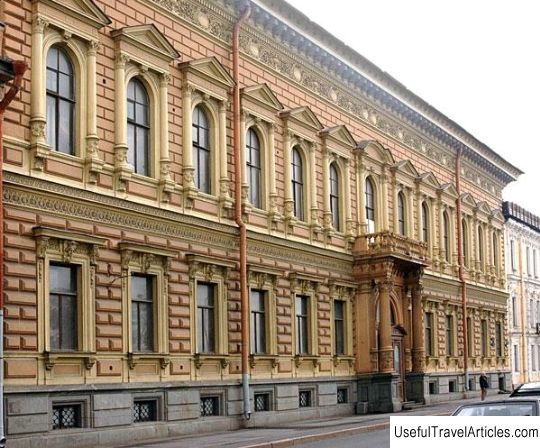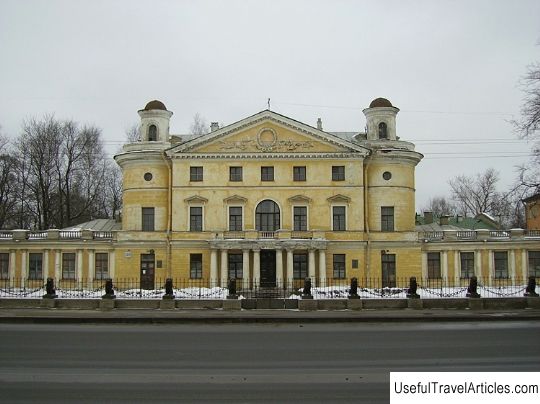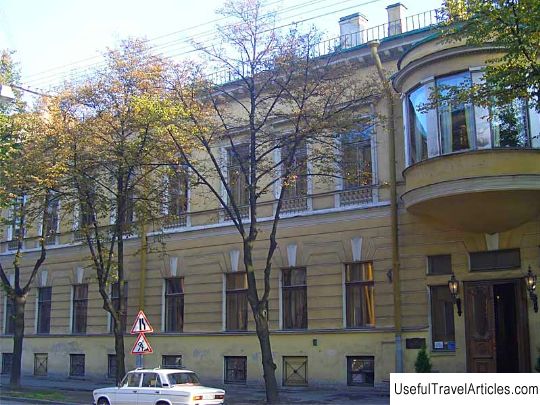Rumyantsev's mansion description and photos - Russia - Saint Petersburg: Saint Petersburg
Rating: 8,2/10 (748 votes) 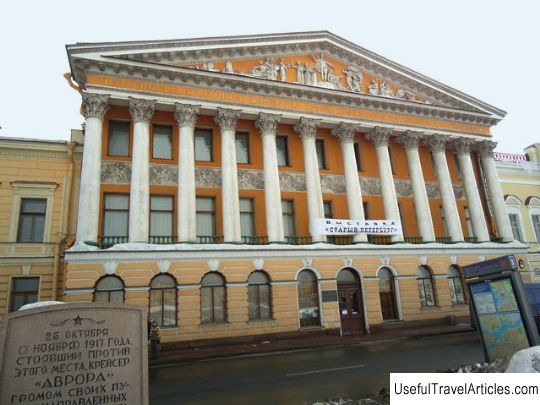
Rumyantsev's mansion description and photos - Russia - Saint Petersburg: Saint Petersburg. Detailed information about the attraction. Description, photos and a map showing the nearest significant objects. Photo and descriptionIn the 1740s, the first stone house was built on the section of the English Embankment between the New Admiralty and Kryukov canals. To build his own mansion, Prince Mikhail Vasilyevich Golitsyn was summoned from Moscow by a special decree of Empress Anna Ioannovna. The two-storey building, built according to the general plan of the embankment development, did not stand out in any way from the buildings surrounding it. In 1802, the mansion was bought by Count Nikolai Petrovich Rumyantsev, the son of a Russian commander, General-Field Marshal Pyotr Alexandrovich Rumyantsev-Zadunaisky and Ekaterina Mikhailovna Golitsyna. On the opposite bank in the Neva square there is a memorial obelisk `` Rumyantsev's Victories '', dedicated to the father of Nikolai Petrovich. In 1808, being the Minister of Commerce, the Count was simultaneously appointed to the post of Minister of Foreign Affairs. He became State Chancellor for the conclusion of the Friedrichsgam Treaty, according to which Finland ceded to Russia. In 1814, Count Rumyantsev resigned, but being an active person, he began organizing scientific research in the field of Russian history. A rich collection of written monuments, medals, coins, and objects of decorative and applied art was formed in his house. There was a library of almost thirty thousand books, including Russian chronicles, works of Russian scientists of the 18th - early 19th centuries, works of Russian researchers and travelers. More than a third of the books were in foreign languages. The entire third floor of the mansion was given for the storage of these collections. Appreciating his collection highly and at its true worth, Count Rumyantsev decided to transfer it to the state along with the mansion as a museum. For permanent financing of the needs of the museum, it was decided to turn residential buildings along Galernaya Street into tenement buildings. In 1824, Rumyantsev invited the then young architect Vasily Alekseevich Glinka to rebuild the building into a museum. The architect tried to preserve the volume and proportions of the building, but completely transformed the facade. Now the mansion was decorated with a twelve-column portico. The tympanum contains a bas-relief "Apollo Musaget on Parnassus, surrounded by nine muses and their mother Mnemosyne", made by the sculptor I.P. Martos. Next to it are the attributes of the arts and sciences, which symbolize the hobbies of the owner of the house. For this project, the young architect was awarded the title of academician. The interior was rebuilt, and special museum furniture was purchased. In one of the halls, a gallery of portraits of Rumyantsev's relatives was placed, including a portrait of the founder of the museum, Count Rumyantsev, by the English artist Dow. On May 28, 1831, the museum was opened for free visits by everyone, regardless of class and rank. But after the death of the founder's younger brother, his financial affairs went from bad to worse. As a result, the museum was moved to Moscow and placed in the Pashkov house. At the end of the 19th century, the architect Alexander Alexandrovich Stepanov rebuilt the mansion for the Beauharnais family, the then owners of the mansion. It was necessary to make urgent repairs due to the deformation of the basement floor. To strengthen it, the lower part of the house was significantly strengthened, and a covered stone entrance was made. The two side doors were transformed into windows, and the central door was expanded. A marble staircase was installed in the house, for which the architect Stepanov gave the wall of the building, overlooking the courtyard, a semicircular shape. The state rooms of the mansion were decorated in the style of historicism: the White (Dance) Hall, the Oak Study, and the Concert Hall. After the revolution, the mansion housed various offices and communal apartments. In 1938, the Rumyantsev mansion was transferred to the Museum of the History and Development of Leningrad, which was then housed in the Anichkov Palace. The building was reconstructed again, so the museum was opened here only in 1955. Now " Rumyantsev's Mansion " is a branch of the State Museum of the History of Leningrad.        We also recommend reading Shopping malls description and photos - Belarus: Novogrudok Topic: Rumyantsev's mansion description and photos - Russia - Saint Petersburg: Saint Petersburg. |
